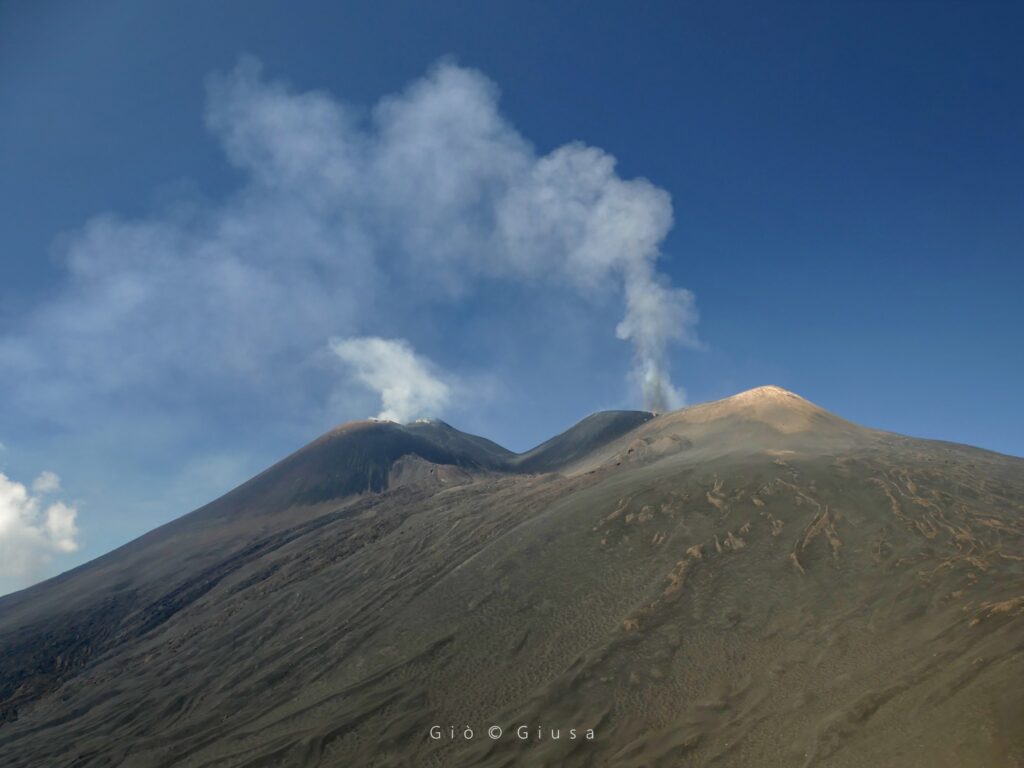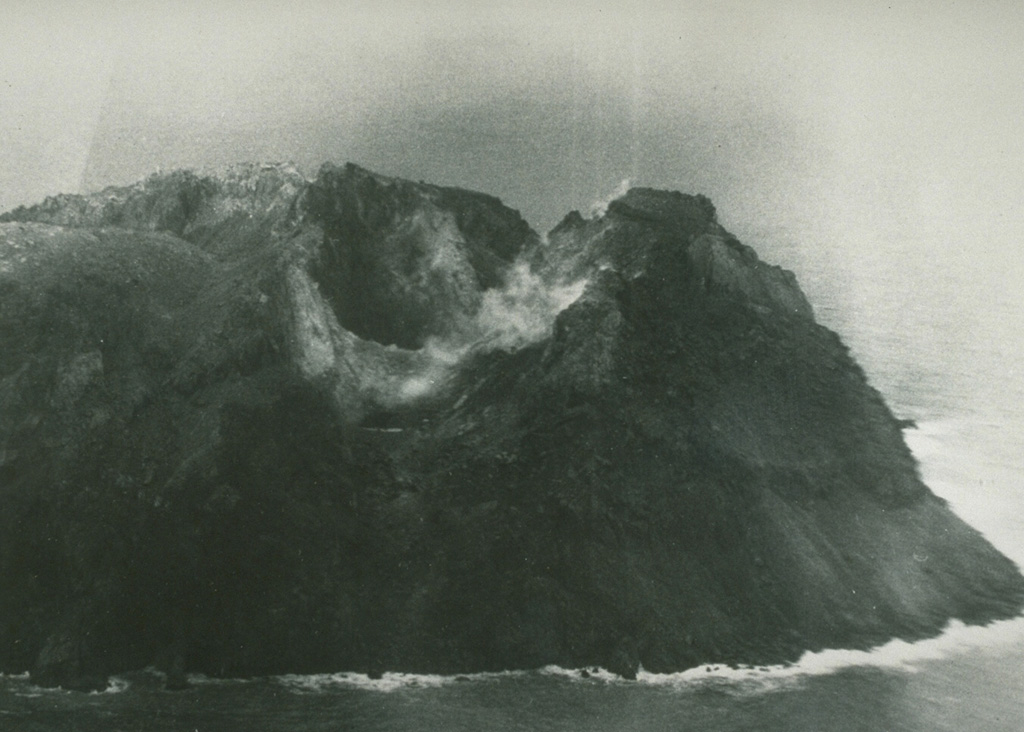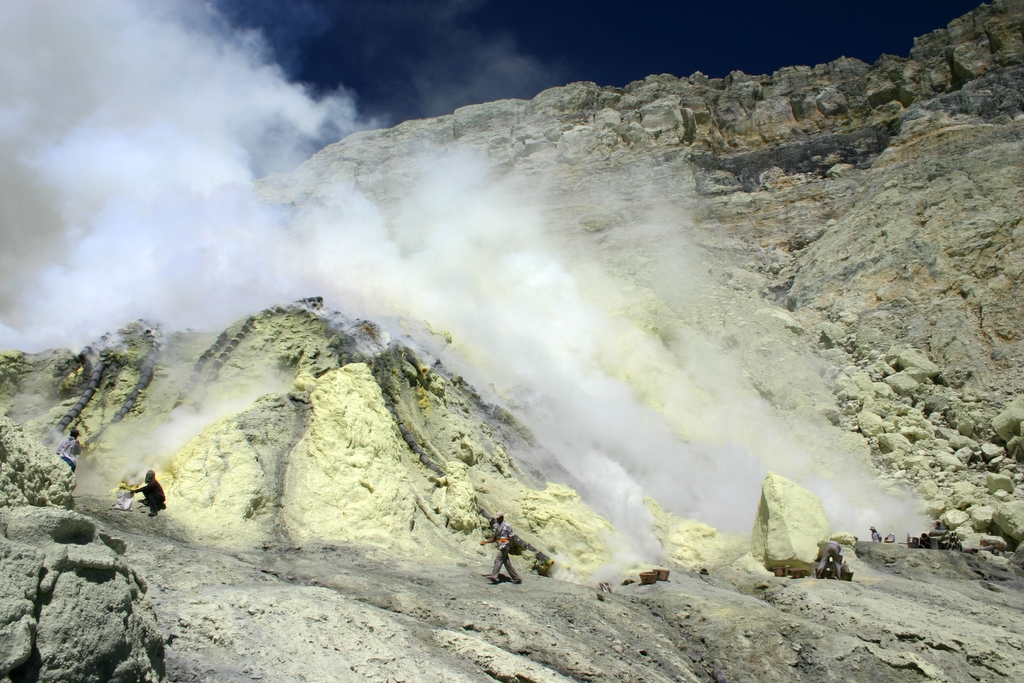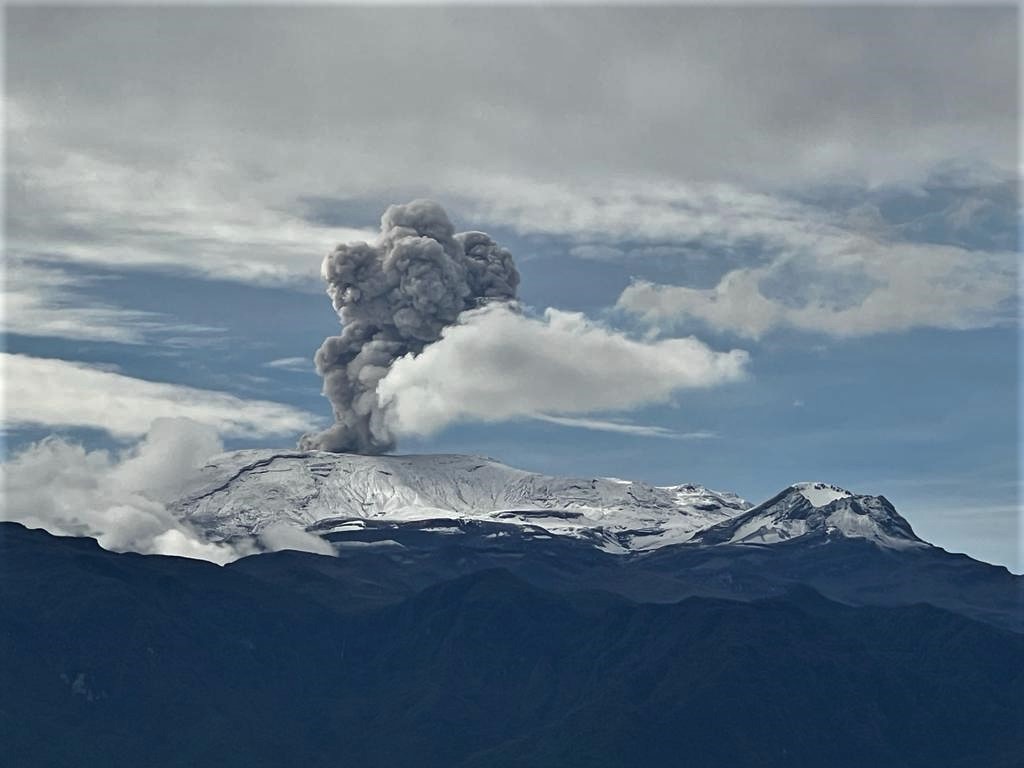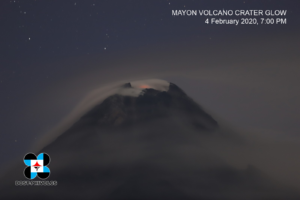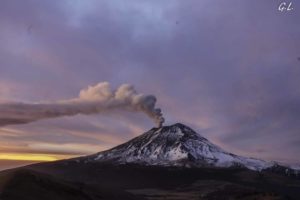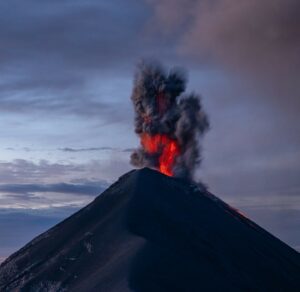July 18 , 2024.
Italy / Sicily , Etna :
Press release on the activity of Etna, July 17, 2024, 8:51 p.m. (18:51 UTC).
The National Institute of Geophysics and Volcanology, Osservatorio Etneo, communicates that at 17:56 UTC, an impulsive explosion occurred from the Northeast crater, which produced cold ash that quickly dispersed in the atmosphere. Analysis of images from surveillance cameras and observations made today by INGV staff during an inspection of the summit area have highlighted that intracrater Strombolian activity is underway in the North crater. East. This activity produces fine and coarse materials, projected up to tens of meters high onto the edge of the crater; the coarsest products fall both inside the crater depression and on the sides of the cone.
At 17:56 UTC, seismic network stations recorded a low-frequency transient with one of the largest amplitudes of summit seismic events recorded in recent hours. An infrasound signal located at the Northeast crater is associated with this seismic event. During the day today, the average amplitude of the volcanic tremor always remained confined in the range of low values with a decreasing trend. The center of gravity of the sources of the volcanic tremor is located near the Southeast crater, at an altitude of approximately 2,500 to 2,800 m above sea level.
The infrasound activity is mainly localized coinciding with the Northeast crater. The occurrence rate of events is low, while their amplitudes have high values.
Concerning ground deformations, the permanent networks do not present significant variations.
July 17, 2024, 9:51 p.m. (7:51 p.m. UTC)
The National Institute of Geophysics and Volcanology, Osservatorio Etneo, reports an impulsive explosion coming from the summit craters.
Further updates will be communicated shortly.
Source : INGV
Photo : INGV , Gio Giusa ( 11/07/2024)
France / Vanuatu , Matthew Island :
France – claimed by Vanuatu , Vanuatu Volcanic Arc
A small, low-level eruption was detected at Mathew Island, Vanuatu Volcanic Arc at 21:50 UTC on July 15, 2024.
The information was provided by Wellington VAAC, who issued two Volcanic Ash Advisories today — at 04:09 UTC and 04:37 UTC.
While this was a small eruption, it is the first at this volcano since 1956 (VEI 0). The volcano has two other confirmed historical eruptions — in 1949 (VEI 2) and 1954 (VEI 2).
Matthew Island is composed of two cones separated by a narrow isthmus. Only the triangular eastern portion of the small, 0.6 x 1.2 km wide island existed prior to the 1940s, after which eruptions began to build the larger western segment (part of which is seen in the photo). The western cone consists primarily of lava flows and contains a crater that is breached to the NW.
Matthew Island is composed of two low andesitic-to-dacitic cones separated by a narrow isthmus. The Matthew name originates from an English mariner who sighted the island in 1788. Only the triangular eastern portion of the 0.6 x 1.2 km island was present prior to the 1940s, when construction of the larger western segment began; it consists primarily of lava flows. The western cone contains a crater that is breached to the NW and is filled by a lava flow whose terminus forms the NW coast.
Sources : Watchers.news , GVP
Photo : Royal New Zealand Air Force, 1977.
Indonesia , Kawah Ijen :
Pusat Vulkanologi dan Mitigasi Bencana Geologi (PVMBG) raised the Alert Level at Ijen from 1 to 2 (on a scale of 1-4) at 2200 on 12 July (local time). The recommended exclusion zone radius was expanded from 500 to 1,500 m away from the crater due to a notable increase in seismic energy, as well as an increase in continuous tremor amplitudes. Realtime seismic amplitude measurement (RSAM) analysis has shown that seismic energy has slowly increased since 1 January 2023. However, a significant increase in energy was observed from 17h00 through 21h00 on 12 July, along with an increase in continuous tremor amplitudes starting at 21h10. From 1 June through 12 July there was a decreasing trend in the number of both shallow volcanic earthquakes (Type B/vulkanik dangkal) and deep volcanic earthquakes (Type A/vulkanik dalam), while the number of other types of earthquakes fluctuated normally. On 30 June the surface temperature of the crater lake water was 34°C, which falls within the normal range. .
Weak to moderate fumarolic activity was observed, characterized by dense white emissions. The color of the water appeared turquoise green, as usual, with no visible gas bubbles on the surface of the lake. The smell of sulfur gas was moderately strong, and sulfur spherules were observed at the edge of the crater lake. White emissions were observed rising 50-100 m above the summit on 10, 12-13, and 16 July, and 50-200 m on 14 July. Emission observations were not reported on 11 or 15 July. Seismicity during 10-16 July included daily gas emission events and continuous tremor, volcanic earthquakes during 13-16 July, and a volcano-tectonic (VT) earthquake on 16 July. PVMBG reminded the public to stay vigilant of the potential for poisonous gases emanating from the crater lake.
Sources : Pusat Vulkanologi et Mitigasi Bencana Geologi (PVMBG, également connu sous le nom de CVGHM) GVP.
Photo : Blethrow , wikipedia ( 2020 )
Chile , Descabezado Grande :
Special Report on Volcanic Activity (REAV), Del Maule region, Descabezado Grande volcanic complex, July 17, 2024, 1:00 p.m. local time (mainland Chile)
The National Geology and Mining Service of Chile (Sernageomin) announces the following PRELIMINARY information, obtained through the monitoring equipment of the National Volcanic Monitoring Network (RNVV), processed and analyzed at the Andes del Sud Volcanological Observatory ( Ovdas):
On Wednesday July 17, 2024 at 12:45 p.m. local time (4:45 p.m. UTC), monitoring stations installed near the Descabezado Grande volcanic complex recorded an earthquake associated with the fracturing of rocks inside the volcanic system (VT volcano-tectonic type) .
The characteristics of the earthquake after its analysis are as follows:
ORIGINAL TIME: 12:45 p.m. local time (4:45 p.m. UTC)
LATITUDE: 35.568°S
LONGITUDE: 70.728° West
DEPTH: 3.4 km
LOCAL MAGNITUDE: 3.1 (ML)
Comments:
After the mentioned event, a second lower energy volcano-tectonic type event was recorded. There have been no changes in the seismic behavior of the volcano.
The technical volcanic alert remains at the Green level.
Source : Sernageomin.
Photo : Sernageomin ( 2017) .
Colombia , Nevado del Ruiz :
Manizales, July 16, 2024, 4:00 p.m. Weekly activity bulletin: Nevado del Ruiz Volcano.
Regarding the monitoring of the activity of the NEVADO DEL RUIZ VOLCANO, the COLOMBIAN GEOLOGICAL SERVICE (SGC), an entity attached to the MINISTRY OF MINES AND ENERGY, reports that:
In the week of July 9 to 15, 2024, the volcano continued with unstable behavior. Compared to the previous week, the main variations in the monitored parameters
were:
– Seismic activity associated with the fracturing of rocks within the volcanic edifice has decreased in the number of earthquakes recorded and has maintained similar levels in seismic energy released. This seismicity was located in the Arenas crater, in its northeast sector and, in a dispersed manner, on the other flanks of the volcano, at distances mostly less than 4 km from the crater. The depths of the events varied between less than 1 and 7 km from the volcano summit. The highest magnitude of the week was 1.2, corresponding to the earthquakes recorded on July 13 at 3:19 a.m. and July 14 at 12:22 p.m., located approximately 1 km to the northwest, 2 km deep, and to the north , at 4 km depth, respectively. Seismic activity linked to the activity of the lava dome (protuberance or mound) located at the bottom of the crater increased, even if it remained short-lived and of low energy level.
Seismicity related to fluid dynamics within volcanic conduits has decreased in the number of recorded earthquakes and in the seismic energy released. The energy levels of the seismic signals were variable with low to moderate and sometimes high values. The seismic signal from July 12 at 10:34 a.m. stands out for the energy level.
Thanks to the cameras used to monitor the volcano and the reports received by Los Nevados National Natural Park officials and SGC personnel on the ground, it was possible to confirm several ash emissions associated with some of these seismic events. Also using FLIR (thermographic) cameras, temperature changes of the emitted material were confirmed.
Servicio Geológico Colombiano’s (SGC) Observatorio Vulcanológico y Sismológico de Manizales reported that eruptive activity at Nevado del Ruiz continued during 9-15 July. The number of seismic events associated with fluid movement decreased in both magnitude and number compared to the previous week but were variable throughout the week. Through webcams and visual observations by officials at Parque Nacional Natural de Los Nevados, several as emissions associated with these events were confirmed. Seismicity associated with rock fracturing decreased in the number of events but maintained similar magnitudes compared to the previous week; these earthquakes at depths of 1-7 km below the summit were primarily located within 4 km of Arenas Crater and the NE sector. The largest events were M 1.2 which were detected at 0319 on 13 July (about 1 km NW and 2 km deep) and 1222 on 14 July (to the N and 4 km deep). Seismic signals indicating lava-dome activity increased but remained of short duration and low energy level. Sulfur dioxide emissions were variable, and gas plumes rose as high as 1.5 km above the crater rim and drifted NW, W, and WSW. Thermal anomalies on the crater floor were identified in satellite data, though weather conditions often inhibited views. The Alert Level remained at Yellow (the second level on a four-level scale), and the public was warned to stay out of the restricted areas around Arenas Crater.
Sources : SGC , GVP .
Photo : SGC ( 04/2023).


